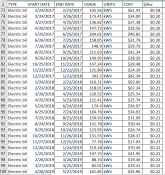donaldbitterman
New Member
- Joined
- Nov 2, 2020
- Messages
- 28
Hello,
I am have 18 used 120 watt panels and would like to get these grid tied and for a dream system have battery back up. My electrical usage is very low so in reality I could get away w/ a 1.2 kw array.
I have in hand a SolarEdge 5000a (unknown if it works) but want to sell that off as untested/parts only as it is oversized and I would rather not go through the step of getting microinverters etc. Selling it and cutting out at least one unknown is a preferred option.
Watching Will and others videos as well as digging through these forums I am thinking of going w/ the a 1000 watt inverter below:
The inverter is a bit undersized, but I have other uses for any extra panels and would love to add battery as well.
I'm also looking at the 2kv system below:
This may be the better option, but I am really unsure if going this is the best path.
A few questions:
1. Can I use this in a permitted grid tie system (not sure on UL listings, etc)
2. Are these the best option
3. As long as I don't exceed input voltage is there any issue with have more panels than the inverter is rated for?
4. Is this outdoor rated? If not, I have a MCC NEMA rated cabinet I can mount this in.
Any other recommendations or should I go with a different unit?
I am have 18 used 120 watt panels and would like to get these grid tied and for a dream system have battery back up. My electrical usage is very low so in reality I could get away w/ a 1.2 kw array.
I have in hand a SolarEdge 5000a (unknown if it works) but want to sell that off as untested/parts only as it is oversized and I would rather not go through the step of getting microinverters etc. Selling it and cutting out at least one unknown is a preferred option.
Watching Will and others videos as well as digging through these forums I am thinking of going w/ the a 1000 watt inverter below:
The inverter is a bit undersized, but I have other uses for any extra panels and would love to add battery as well.
I'm also looking at the 2kv system below:
This may be the better option, but I am really unsure if going this is the best path.
A few questions:
1. Can I use this in a permitted grid tie system (not sure on UL listings, etc)
2. Are these the best option
3. As long as I don't exceed input voltage is there any issue with have more panels than the inverter is rated for?
4. Is this outdoor rated? If not, I have a MCC NEMA rated cabinet I can mount this in.
Any other recommendations or should I go with a different unit?
Last edited:










